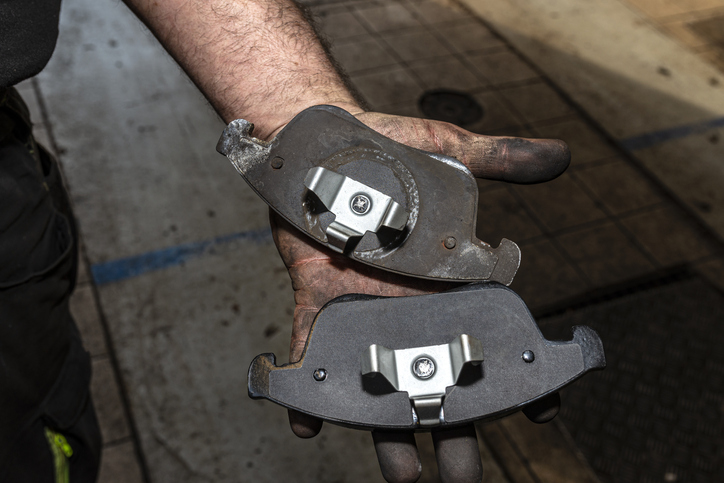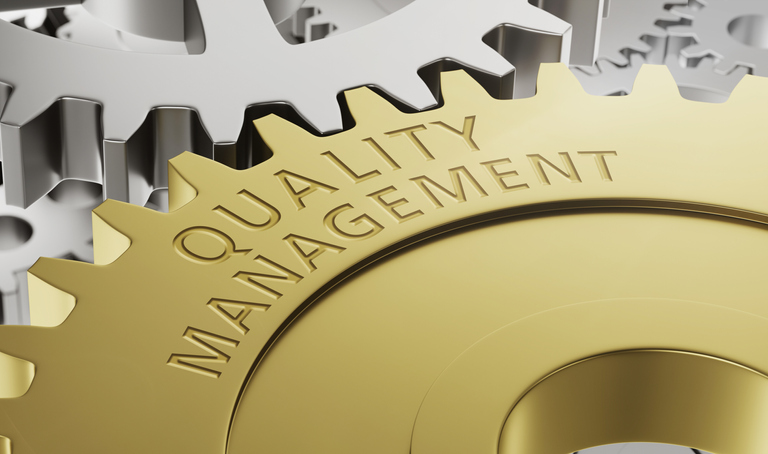Advantages and disadvantages of new and used car parts

Read more: OEM car parts manufacturing: the key components of the sector
New and used car parts: These are the advantages and disadvantages
.
All car components are subject to constant wear and tear, or can be damaged in an accident. If a suitable spare part is then needed, the question arises whether it is more worthwhile to buy new parts or used car parts. New parts sometimes appear to be the better choice, but they are considerably more expensive. Used parts are available in large numbers, and are often reasonably priced. Find out all about the advantages and disadvantages of new and used car parts below, and where you can buy used parts cheaply.
Buy used car parts
Buying used spare parts is often a good way to get your car repaired cheaply. The price of used parts can be very reasonable, and not only for older vehicles. In addition, used car parts offer further advantages, but there are also some disadvantages.
Advantages of used car parts
- Favourable prices: Used spare parts are often much cheaper than new parts. That is why price-conscious buyers prefer used car parts. Especially do-it-yourselfers like to use used parts from car recycling and save a lot of money on repairs.
- Large selection: Car parts as used parts are available in large numbers and in many variations. In this way, almost any car part can be found. The buyer can also determine and compare for himself which part with which mileage is best suited for his purposes.
- Fast delivery: Unlike many new parts, used car parts can be delivered quickly. As a rule, the removed part is already on the shelf and is just waiting to be shipped. As soon as the buyer has completed the ordering process, the spare part is packed and sent off.
- Old Original Parts: Original used parts are available for older vehicles. Owners of classic cars can thus buy original parts for their vehicle model. The parts from the original year of construction preserve the vehicle value and are often a better fit than replicas.
- Matching colour: Unlike new car parts, used body parts such as doors, hoods, bumpers and plastic covers are already painted. This often makes it possible to buy a matching part in the colour of the car without having to paint it.
- Protecting the environment: Buying car parts from certified car recycling makes an important contribution to protecting the environment. By reusing used parts, no new car parts have to be produced. Old parts also do not have to be destroyed in a costly manner.
.
Disadvantages of buying used car parts
- Uniform quality: When buying used car parts, not all parts have the same quality. The used parts are removed from different vehicles with different mileage in the course of car recycling. Here the buyer must compare for himself.
- Shortened warranty: Used car parts often have a shortened warranty period or no warranty at all. Since the parts from the car recycling have already been used, the same warranty cannot be estimated for the sale as for a new part.
- Unclear offers: Used car parts are not always listed attractively and with all the information. Then it sometimes takes longer to find the right part. However, some platforms for used car parts offer a good search function.
Buy new car parts
New car parts come fresh from the factory and have never been installed before. Such new parts are the ideal solution for many car mechanics, but are sometimes quite expensive. It is therefore not always worth buying new parts. In addition to advantages, buying new components for the car can also have disadvantages.
Advantages of new car parts
- Constant quality: Original car parts and OEM parts from the vehicle manufacturer have a consistent quality. The new parts have not yet been in use, and consequently cannot have worn out. The fit on the car is also usually constant for all parts.
- With warranty: Often the manufacturer or the dealer gives a warranty on newly produced car parts. If a defect occurs in the part before the end of the warranty period, the supplier provides a warranty service and replaces the component with a new one, for example.
- Easy selection: Original vehicle parts can be selected more easily via the OEM numbers. On the part of the buyer, there is often little to consider when selecting new car parts. However, the prerequisite is that the car part is still available for the model in question.
Disadvantages when buying new car parts
- Higher price: Newly produced car parts often command very high prices. If the parts in question are only offered by the manufacturer itself, there is also a lack of any competition that would give hope of favourable offers. New parts sometimes do not pay off for older vehicles.
- Long delivery time: Due to delivery delays on the part of production or transport, many new parts are not always available immediately. If customers then have to wait for the right car parts, they cannot use their vehicle at all or only to a limited extent during this time.
- Matching required: Not all car manufacturers offer new parts in different colours. Especially body parts or plastic elements are often only supplied with a primer. Then there is still cumbersome and expensive painting work to be done.
Buy suitable car parts from car recycling
.
If you decide to buy used car parts, you can save a lot of money and help the environment. However, there are some points to consider when buying used parts so that your purchase is not fraught with disadvantages. Among other things, it is important to select the exact spare part for your vehicle.
The Autoparts24.eu shop system gives you access to numerous offers of a wide range of vehicle parts. The search for the right spare part is also made much easier here. The approach to selecting spare parts is entirely up to you. You will definitely find the right spare part for your car.
The parts search is particularly convenient when you enter the make and model of your car. After entering the data, you can choose between the individual assemblies of the vehicle. After clicking on the body group, for example, all body components for the selected model are displayed for the purpose of selection and price comparison.
In addition to searching by model and manufacturer, you can also search for suitable spare parts by entering the key numbers from the vehicle registration document. In this way, you will receive the appropriate search results for your vehicle. When selecting the part, you should note all the information on the original number, the photo shown and further information from the supplier.
OEM original parts or aftermarket: these are the differences
If the car is defective, there are various options for procuring replacement parts. It is not unusual for potential buyers to come across terms such as OEM parts and aftermarket parts. But what do the two designations mean, and how…
Read more
Used parts: How to check the quality of used car parts
If the car is broken, it can be repaired cheaply thanks to inexpensive used parts. However, all spare parts from car recycling should be comprehensively checked. What has already been done by the car recycling company when you buy online,…
Read more
Top guides
- Injection system in the car explained simply - parts and function of the injection...
- Maintenance and repair of electric cars: what can your normal garage do?
- Increasing performance with chip tuning: benefits, risks and tips
- Guide: Computer systems and software in your car
- Which electric car parts need repair or replacement most often?
- What is a solid-state battery for electric cars?
- All about engine sensors: from combustion engines to electric cars
- Increase the range of an electric car: How every electric car gets further
- Electric car battery life: How to extend the life of the battery
- What is the compression of a car engine?
- This is the cubic capacity of a car engine
- Internal combustion engine valves: function, defects and repair
- Core components of the internal combustion engine - parts and functions
- Engine lubrication in cars: components, function and defects
- The environmental impact of manufacturing new car parts
- All about pollutant classes and their role in environmental protection
- Engine overhaul: What is an engine overhaul and how much does it cost?
- OEM car parts manufacturing: the key components of the sector
- Understanding engine power - insight into the technology of the car engine
- The steering system of the car - structure and operation
- The car's braking system - structure, parts and function
- Engine types in the car: V-engine, in-line engine and boxer engine explained
- 8 tips before buying a used electric car
- Distinguish OEM parts, aftermarket and counterfeit car parts
- The EPC indicator light is on or flashing: What to do?
- Master brake cylinder: function, defect detection and repair
- OEM car parts for hybrid and electric cars
- Used youngtimer and classic car parts - the best tips
- Cruise control: Function and repair of the cruise control system in the car
- Exhaust system: Everything you need to know about parts and function of the exhaus...
- Locking system: security and reliable locking on the car
- The engine's air intake system - parts, function and replacement
- Brake caliper defective? How to replace it yourself
- Fuel system: parts of the fuel supply from the tank to the cylinder
- Air conditioning system: function and components of your car air conditioning syst...
- The clutch: structure and function explained simply
- Detecting and replacing a defective fuel pump
- Surprised? So many pumps work in your car
- The most common causes of a defective electric car
- The 6 most important safety components of your car
- Identify and repair a defective starter in a flash
- 5 common chassis problems and how to fix them
- 10 unknown car parts that many drivers do not know about
- Engine cooling: function and important components of the cooling system
- Differences between petrol and diesel engines
- All-wheel drive: How the mechanics and components of all-wheel drive work
- Engine control unit car: Everything about components and functioning
- Defective engine control unit: causes, symptoms and repair
- HP vs. torque: What is the difference between power and torque?
- EV motors basics: How are they built, how they work and differ from combustion eng...
- The chassis: overview and function of all suspension components
- Used electric car parts: What to look out for
- The importance of the chassis number when buying used car parts
- ABS pump defective? Function, repair and replacement
- Injection nozzle defective? Diagnosis, cleaning and changing the injection nozzles
- Alternator defective? What symptoms occur and when to change the component
- Water pump defective? Symptoms and how to repair or change it
- Steering gear defective? What are the symptoms and when should the component be re...
- Lambda sensor defective? What are the symptoms and can I clean the sensor?
- Defective air conditioning compressor - what are the symptoms and when should the ...
- Intake manifold defective? Replace gasket or clean manifold?
- Exhaust manifold leaking? Symptoms of a defective exhaust manifold or gasket and w...
- Turbocharger defective? Repair or change?
- Servo pump defective? What symptoms occur and when you should change the part
- Clutch broken? - These symptoms indicate a defect in the clutch
- Common problems and repair of defective drive shafts
- Causes of engine noise and what to do about it?
- What can car diagnostic devices do and do I need an OBD scanner?
- When and how to replace brake discs and brake pads
- Brake warning lamp lights up - causes and what to do?
- EGR valve defective: Avoid engine problems and clean EGR valve
- Improve fuel consumption: How your car uses less fuel
- Squeaking brakes: Why brakes squeak and how to get rid of it
- Safely jacking up a car: How to jack up a car using a jack and jack stands
- How a defect in the muffler becomes noticeable and how it is replaced
- E-car motor: These electric car parts you can replace yourself
- Engine overheated: What you should do if the engine overheats
- Engine check lamp lights up: What you should do as a motorist
- The engine code: What does the code mean and where can I find it on the car?
- Tools for car repair: These 10 tools you should own
- Car repair mistakes: These are the 7 most common car repair mistakes
- The gearbox code: What does the code mean and where can it be found on the gearbox...
- Used parts: How to check the quality of used car parts
- Vehicle transmission: What is the difference between manual and automatic transmis...
- Mileage: This is how mileage affects used spare parts
- Car recycling: What happens to the car when it is recycled?
- OEM original parts or aftermarket: these are the differences
- Advantages and disadvantages of new and used car parts
- Starting problems? Top 9 reasons why your car does not start
- What’s that smell from my car? Top causes and cures
- Advantages of shopping scrap car parts online vs. going to the local breaker yards...
- 10 most frequently purchased car parts from car breakers/junkyard
- Important car parts and their function
- Common car engine problems: Diagnosing, Troubleshooting and Fixes
- Best tips for setting up your own home car workshop
- 7 Car parts replacements and repair tasks you should not do yourself
- DIY Car Maintenance and Repair Tasks
- Guide: How to Maintain and Protect Your Car Engine
- Best practices for Engine Rebuild
- Common Causes of Rear Differential Noise, troubleshooting, and how fix it
- Common Causes of power steering noise and how fix it
- Your Guide to Car Engine Components and Functions
- Licence plate and VIN information
- Top 10 of the most popular brands in second-hand autoparts
- France is just so cool

